Your cart is currently empty!
Tag: Sequences

LSTM: Bridging the Gap Between Data Sequences and Predictive Analytics
Long Short-Term Memory (LSTM) is a type of recurrent neural network (RNN) that has gained popularity in recent years for its ability to effectively model and predict sequential data. Unlike traditional feedforward neural networks, which are limited in their ability to capture temporal dependencies in data, LSTM networks are designed to retain information over long periods of time, making them ideal for tasks such as time series prediction, speech recognition, and natural language processing.One of the key strengths of LSTM networks is their ability to learn long-term dependencies in data. Traditional RNNs suffer from the problem of vanishing gradients, which makes it difficult for them to learn relationships between distant data points. LSTM networks overcome this problem by introducing a set of gating mechanisms that control the flow of information through the network. These gates, which include input gates, forget gates, and output gates, allow the network to selectively update and store information in its memory cells, enabling it to effectively capture long-term dependencies in the data.
Another advantage of LSTM networks is their ability to handle variable-length sequences of data. Unlike traditional feedforward neural networks, which require fixed-length inputs, LSTM networks can process sequences of data of any length, making them well-suited for tasks where the length of the input data may vary, such as natural language processing or time series prediction.
In addition to their ability to model sequential data, LSTM networks are also highly effective for predictive analytics tasks. By training an LSTM network on a sequence of input data and its corresponding target output, the network can learn to predict future values in the sequence based on past observations. This makes LSTM networks well-suited for tasks such as forecasting stock prices, predicting customer churn, or identifying patterns in time series data.
Overall, LSTM networks have proven to be a powerful tool for bridging the gap between data sequences and predictive analytics. Their ability to capture long-term dependencies in data, handle variable-length sequences, and make accurate predictions make them a valuable asset for a wide range of applications in fields such as finance, healthcare, and natural language processing. As the field of deep learning continues to evolve, LSTM networks are likely to play an increasingly important role in enabling more sophisticated and accurate predictive analytics models.
#LSTM #Bridging #Gap #Data #Sequences #Predictive #Analytics,lstm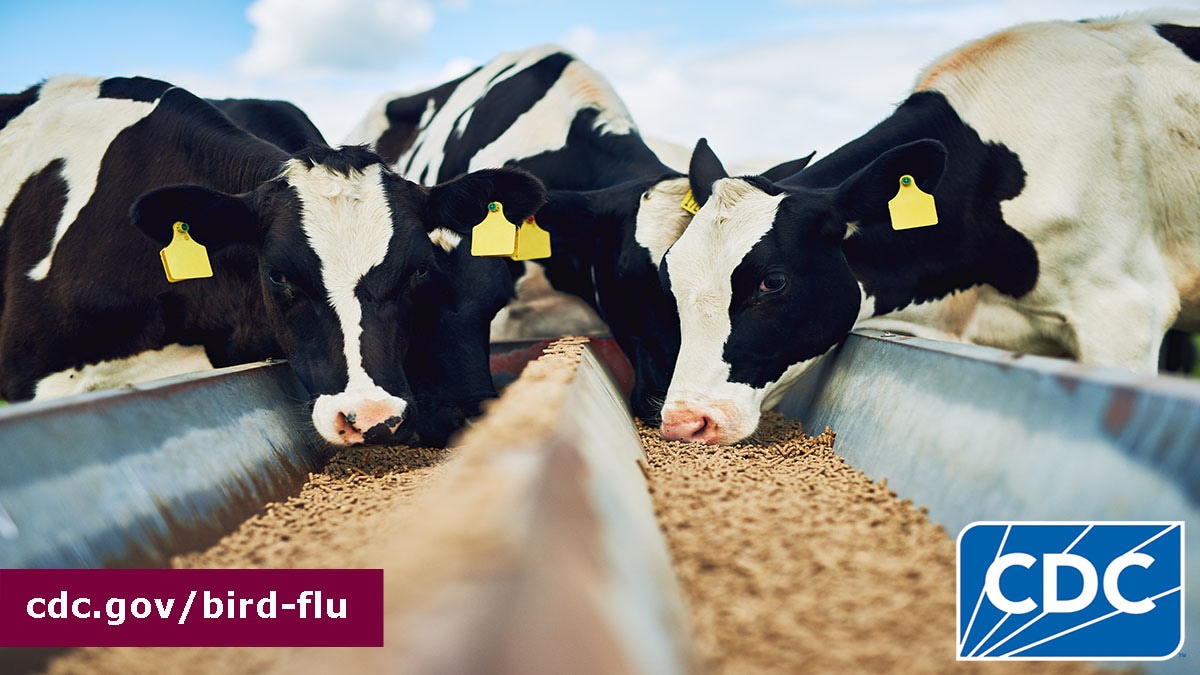
Genetic Sequences of Highly Pathogenic Avian Influenza A(H5N1) Viruses Identified in a Person in Louisiana | Bird Flu
Background
This is a technical summary of an analysis of the genomic sequences of the viruses identified in two upper respiratory tract specimens from the patient who was severely ill from an infection with highly pathogenic avian influenza (HPAI) A(H5N1) virus in Louisiana. The patient was infected with A(H5N1) virus of the D1.1 genotype virus that is closely related to other D1.1 viruses recently detected in wild birds and poultry in the United States and in recent human cases in British Columbia, Canada, and Washington State. This avian influenza A(H5N1) virus genotype is different from the B3.13 genotype spreading widely and causing outbreaks in dairy cows, poultry, and other animals, with sporadic human cases in the United States. Deep sequencing of the genetic sequences from two clinical specimens from the patient in Louisiana was performed to look for changes associated with adaptation to mammals. There were some low frequency changes in the hemagglutinin (HA) gene segment of one of the specimens that are rare in people but have been reported in previous cases of A(H5N1) in other countries and most often during severe infections. One of the changes found was also identified in a specimen collected from the human case with severe illness detected in British Columbia, Canada, suggesting they emerged during the clinical course as the virus replicated in the patient. Analysis of the N1 neuraminidase (NA), matrix (M) and polymerase acid (PA) genes from the specimens showed no changes associated with known or suspected markers of reduced susceptibility to antiviral drugs.
CDC Update
December 26, 2024 – CDC has sequenced the HPAI A(H5N1) avian influenza viruses in two respiratory specimens collected from the patient in Louisiana who was severely ill from an A(H5N1) virus infection. CDC received two specimens collected at the same time from the patient while they were hospitalized for severe respiratory illness: a nasopharyngeal (NP) and combined NP/oropharyngeal (OP) swab specimens. Initial attempts to sequence the virus from the patient’s clinical respiratory specimens using standard RNA extraction and multisegment-RTPCR (M-RTPCR)1 techniques yielded only partial genomic data and virus isolation was not successful. Nucleic acid enrichment was needed to sequence complete genomes with sufficient coverage depth to meet quality thresholds. CDC compared the influenza gene segments from each specimen with A(H5N1) virus sequences from dairy cows, wild birds, poultry and other human cases in the U.S. and Canada. The genomes of the virus (A/Louisiana/12/2024) from each clinical specimen are publicly posted in GISAID (EPI_ISL_19634827 and EPI_ISL_19634828) and GenBank (PQ809549-PQ809564).
Summary of amino acid mixtures identified in the hemagglutinin (HA) of clinical specimens from the patient.
Overall, the hemagglutinin (HA) sequences from the two clinical specimens were closely related to HA sequences detected in other D1.1 genotype viruses, including viruses sequenced from samples collected in November and December 2024 in wild birds and poultry in Louisiana. The HA genes of these viruses also were closely related to the A/Ezo red fox/Hokkaido/1/2022 candidate vaccine virus (CVV) with 2 or 3 amino acid changes detected. These viruses have, on average, 3 or 4 amino acid changes in the HA when compared directly to the A/Astrakhan/3212/2020 CVV sequence. These data indicate the viruses detected in respiratory specimens from this patient are closely related to existing HPAI A(H5N1) CVVs that are already available to manufacturers, and which could be used to make vaccines if needed.
There were some differences detected between the NP/OP and the NP specimens. Despite the very close similarity of the D1.1 sequences from the Louisiana human case to bird viruses, deep sequence analysis of the HA gene segment from the combined NP/OP sample detected low frequency mixed nucleotides corresponding to notable amino acid residues (using mature HA sequence numbering):
- A134A/V [Alanine 88%, Valine 12%];
- N182N/K [Asparagine 65%, Lysine 35%]; and
- E186E/D [Glutamic acid 92%, Aspartic Acid 8%].
The NP specimen, notably, did not have these low frequency changes indicating they may have been detected from swabbing the oropharyngeal cavity of the patient. While these low frequency changes are rare in humans, they have been reported in previous cases of A(H5N1) in other countries and most often during severe disease2345. The E186E/D mixture, for example, was also identified in a specimen collected from the severe human case detected in British Columbia, Canada67.
This summary analysis focuses on mixed nucleotide detections at residues A134V, N182K, E186D as these changes may result in increased virus binding to α2-6 cell receptors found in the upper respiratory tract of humans. It is important to note that these changes represent a small proportion of the total virus population identified in the sample analyzed (i.e., the virus still maintains a majority of ‘avian’ amino acids at the residues associated with receptor binding). The changes observed were likely generated by replication of this virus in the patient with advanced disease rather than primarily transmitted at the time of infection. Comparison of influenza A(H5) sequence data from viruses identified in wild birds and poultry in Louisiana, including poultry identified on the property of the patient, and other regions of the United States did not identify these changes. Of note, virus sequences from poultry sampled on the patient’s property were nearly identical to the virus sequences from the patient but did not have the mixed nucleotides identified in the patient’s clinical sample, strongly suggesting that the changes emerged during infection as virus replicated in the patient. Although concerning, and a reminder that A(H5N1) viruses can develop changes during the clinical course of a human infection, these changes would be more concerning if found in animal hosts or in early stages of infection (e.g., within a few days of symptom onset) when these changes might be more likely to facilitate spread to close contacts. Notably, in this case, no transmission from the patient in Louisiana to other persons has been identified. The Louisiana Department of Public Health and CDC are collaborating to generate additional sequence data from sequential patient specimens to facilitate further genetic and virologic analysis.
Additional genomic analysis
The genetic sequences of the A(H5N1) viruses from the patient in Louisiana did not have the PB2 E627K change or other changes in polymerase genes associated with adaptation to mammals and no evidence of low frequency changes at critical positions. And, like other D1.1 genotype viruses found in birds, the sequences lack PB2 M631L, which is associated with viral adaptation to mammalian hosts, and which has been detected in >99% of dairy cow sequences but is only sporadically found in birds. Analysis of the N1 neuraminidase (NA), matrix (M) and polymerase acid (PA) genes from the specimens showed no changes associated with known or suspected markers of reduced susceptibility to antiviral drugs. The remainder of the genetic sequences of A/Louisiana/12/2024 were closely related to sequences detected in wild bird and poultry D1.1 genotype viruses, including poultry identified on the property of the patient, providing further evidence that the human case was most likely infected following exposure to birds infected with D1.1 genotype virus.
Follow Up Actions
Overall, CDC considers the risk to the general public associated with the ongoing U.S. HPAI A(H5N1) outbreak has not changed and remains low. The detection of a severe human case with genetic changes in a clinical specimen underscores the importance of ongoing genomic surveillance in people and animals, containment of avian influenza A(H5) outbreaks in dairy cattle and poultry, and prevention measures among people with exposure to infected animals or environments.
Recently, genetic sequences of highly pathogenic Avian Influenza A(H5N1) viruses have been identified in a person in Louisiana. This discovery has raised concerns about the potential for bird flu to spread to humans.The H5N1 virus is known to primarily infect birds, particularly poultry. However, there have been cases of transmission to humans in the past, leading to severe illness and even death. The genetic sequencing of the virus found in the individual in Louisiana suggests that this strain may have the potential to spread to humans more easily.
Health officials are closely monitoring the situation and taking steps to prevent further spread of the virus. It is important for people to take precautions, such as avoiding contact with sick birds and practicing good hygiene, to reduce the risk of contracting the virus.
This discovery highlights the ongoing threat of avian influenza and the importance of continued surveillance and research to better understand and control the spread of these viruses. Stay informed and stay safe. #BirdFlu #H5N1 #AvianInfluenza #Louisiana #GeneticSequences
Tags:
- Avian Influenza A(H5N1) genetic sequences
- Bird Flu outbreak in Louisiana
- Highly Pathogenic Avian Influenza A(H5N1) virus
- Louisiana bird flu infection
- Genetic analysis of H5N1 viruses
- Avian flu transmission in humans
- Louisiana bird flu outbreak
- H5N1 virus in Louisiana
- Human infection with bird flu virus
- Avian Influenza A(H5N1) genetic identification
#Genetic #Sequences #Highly #Pathogenic #Avian #Influenza #AH5N1 #Viruses #Identified #Person #Louisiana #Bird #Flu
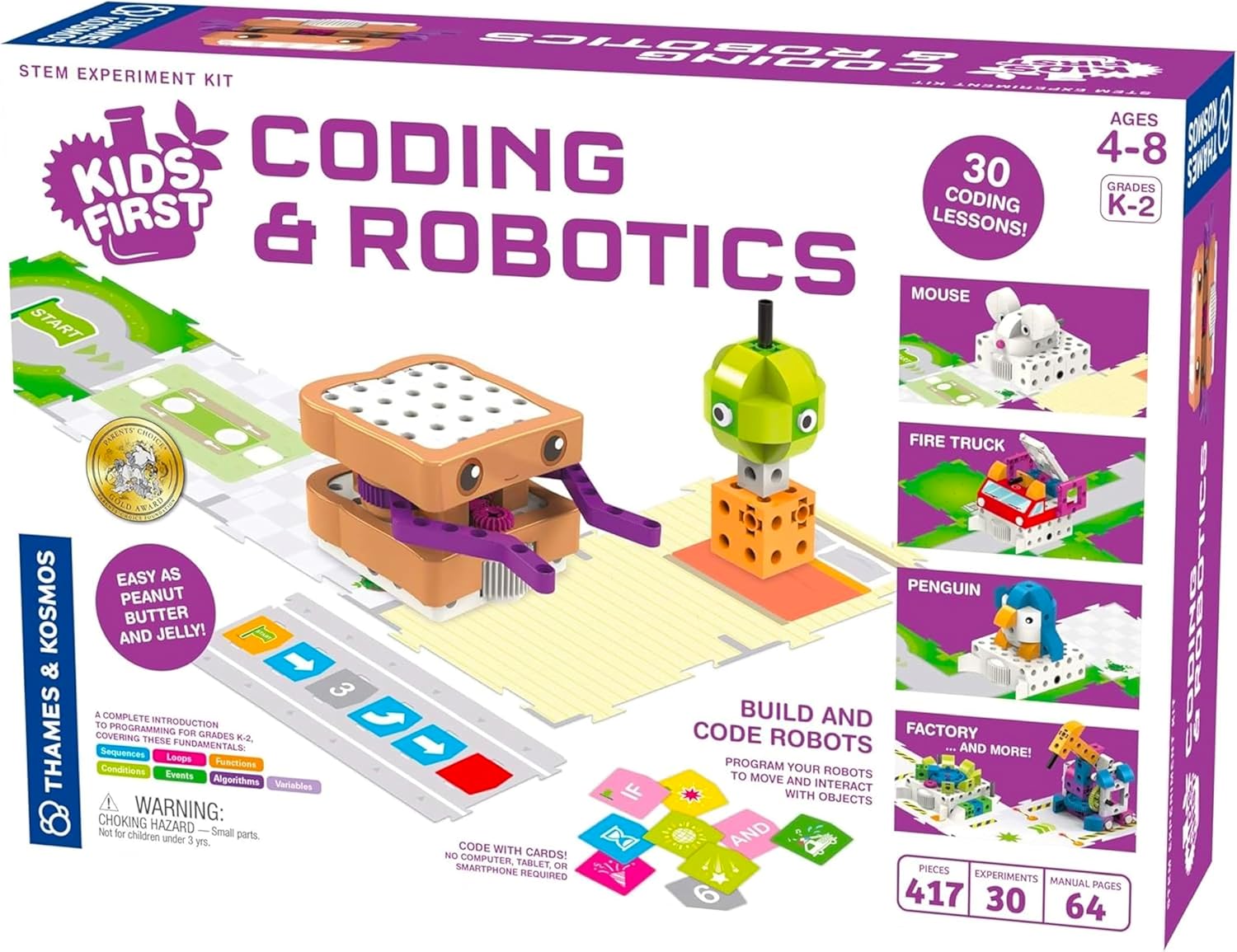
Kids First Coding & Robotics | No App Needed | Grades K-2 | Intro To Sequences, Loops, Functions, Conditions, Events, Algorithms, Variables | Parents’ Choice Gold Award Winner | by Thames & Kosmos
Price:$129.95– $90.99
(as of Dec 25,2024 01:22:44 UTC – Details)
Meet Sammy. This cute little peanut butter and jelly sandwich is actually a robot that teaches coding principles and skills to children in grades K-2. You don’t need a tablet, smartphone, or computer to program this robot; programs are created by simply laying down a sequence of physical code cards. As the robot drives over the code cards, an OID optical scanner on the bottom of the robot reads the code cards one by one and loads the program. Next, place the robot on a grid made of map cards, and the robot runs the program. You can program the robot to move in different directions, activate its output gear, light up its LED, play sounds, and respond to different function cards. The integrated output gear makes it possible to build simple robotic creations with arms or other moving parts that respond according to the program’s instructions. This robot kit also teaches physical engineering and problem solving skills through a series of building and coding lessons. The 30 lessons are aligned with standards for computer science education developed by the Computer Science Teachers Association (CSTA) and the International Society for Technology (ISTE) Education, as well as courses from Code.org. The lessons progress in complexity through the illustrated manual, allowing the kit to be appropriate for a child as young as four years with help from an adult and as old as eight years. The lessons cover these six key areas in coding: sequencing, loops, events, conditionals, functions, and variables. In addition to Sammy, there are five other stories, each with a series of model-building and coding challenges and lessons related to it: a mouse moves through a maze to find cheese; a penguin wanders around a zoo; a soccer player moves a ball into the goal; a fire truck puts out a fire; and a factory robot performs tasks in a factory scene. A full-color illustrated manual guides users through the coding lessons and the assembly of the different models.
Early STEM learning: an introduction to the fundamentals of coding and robotics for grades K-2.
Unplugged: no software, apps, or smart devices required!
Clear explanations: the 64-page, full-color experiment manual guides kids through the coding lessons and model building exercises.
Story-based: six different storylines are included, each with a series of model-building and coding lessons, like a mouse moving through a maze to find cheese or a soccer player moving a ball into the goal!Customers say
Customers find the science fundamentals kit a great way for kids to learn the basics of coding. They appreciate the lesson plans and instructions, which develop their child’s programming mind. The kit keeps kids engaged for hours, keeping them interested in putting parts together and coding. Many consider it a good quality kit that is worth every penny. The robot functionality is also appreciated by customers. However, some have issues with the quantity and sturdiness of parts.
AI-generated from the text of customer reviews
Looking for a fun and educational way to introduce your child to coding and robotics? Look no further than Kids First Coding & Robotics by Thames & Kosmos! This award-winning kit is designed for kids in grades K-2 and does not require any apps or screens to use.With Kids First Coding & Robotics, your child will learn the basics of coding through hands-on activities and experiments. They will explore concepts such as sequences, loops, functions, conditions, events, algorithms, and variables in a fun and engaging way.
This kit has been recognized with the Parents’ Choice Gold Award for its innovative approach to teaching kids about coding and robotics. Give your child a head start in STEM education with Kids First Coding & Robotics today!
#Kids #Coding #Robotics #App #Needed #Grades #Intro #Sequences #Loops #Functions #Conditions #Events #Algorithms #Variables #Parents #Choice #Gold #Award #Winner #Thames #Kosmos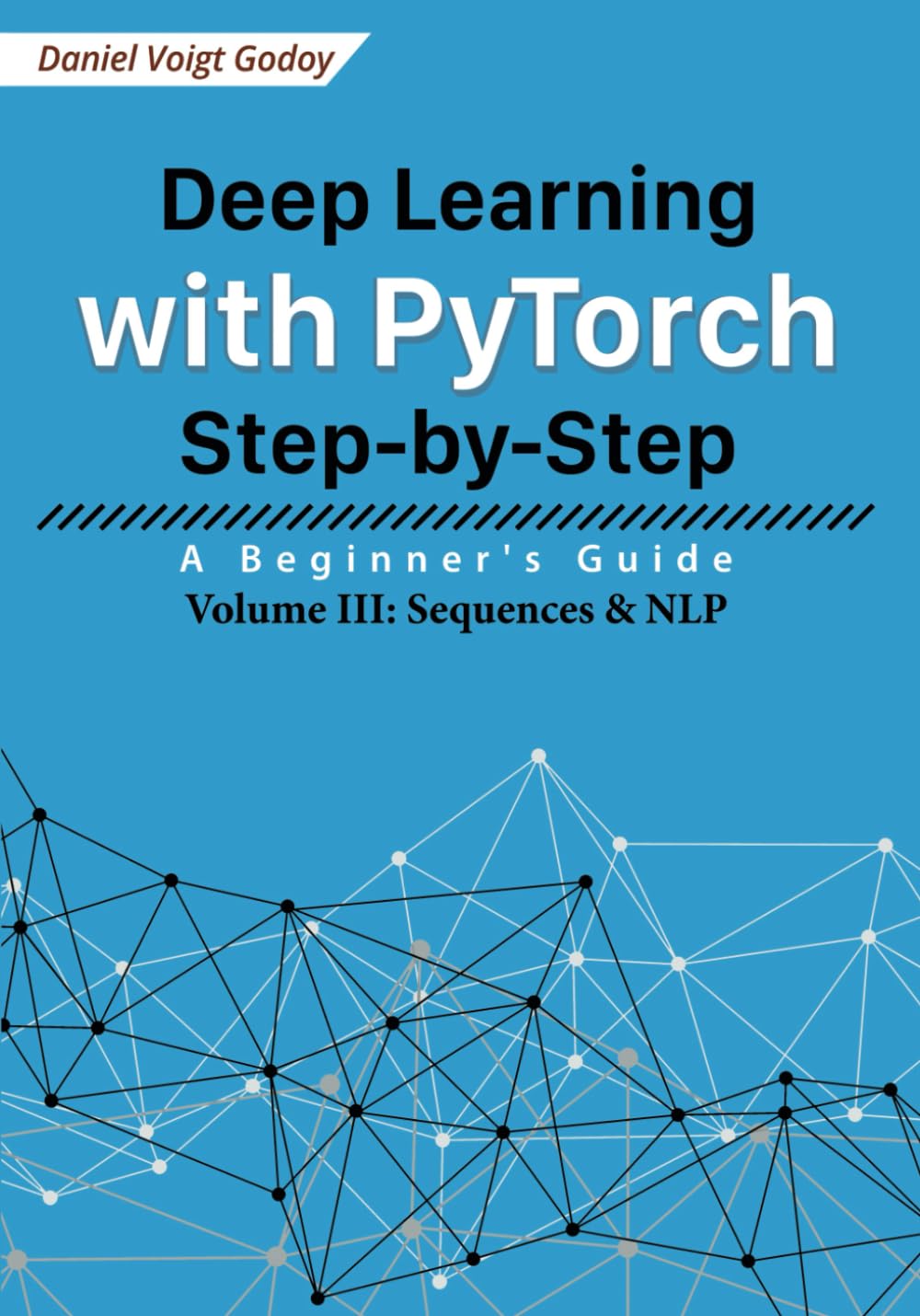
Deep Learning with PyTorch Step-by-Step: A Beginner’s Guide: Volume III: Sequences & NLP
Price: $27.95
(as of Dec 24,2024 07:56:26 UTC – Details)From the Publisher




Is this book for me?
Daniel wrote this book for beginners in general – not only PyTorch beginners. Every now and then he will spend some time explaining some fundamental concepts which are essential to have a proper understanding of what’s going on in the code.
This volume is more demanding than the other two, and you’re going to enjoy it more if you already have a solid understanding of deep learning models.
In this third volume of the series, you’ll be introduced to all things sequence-related: recurrent neural networks and their variations, sequence-to-sequence models, attention, self-attention, and Transformers.
This volume also includes a crash course on natural language processing (NLP), from the basics of word tokenization all the way up to fine-tuning large models (BERT and GPT-2) using the HuggingFace library.
By the time you finish this book, you’ll have a thorough understanding of the concepts and tools necessary to start developing, training, and fine-tuning language models using PyTorch.
What’s inside
Recurrent neural networks (RNN, GRU, and LSTM) and 1D convolutions
Seq2Seq models, attention, self-attention, masks, and positional encoding
Transformers, layer normalization, and the Vision Transformer (ViT)
BERT, GPT-2, word embeddings, and the HuggingFace library
… and more!

How is this book different?
This book is written as if YOU, the reader, were having a conversation with Daniel, the author: he will ask you questions (and give you answers shortly afterward) and also make some (silly) jokes.
Moreover, this book spells concepts out in plain English, avoiding fancy mathematical notation as much as possible.
It shows you the inner workings of sequence models, in a structured, incremental, and from-first-principles approach.
It builds, step-by-step, not only the models themselves but also your understanding as it shows you both the reasoning behind the code and how to avoid some common pitfalls and errors along the way.


“Hi, I’m Daniel!”
I am a data scientist, developer, teacher, and author of this series of books.
I will tell you, briefly, how this series of books came to be. In 2018, before teaching a class, I tried to find a blog post that would visually explain, in a clear and concise manner, the concepts behind binary cross-entropy so that I could show it to my students. Since I could not find any that fit my purpose, I decided to write one myself. It turned out to be my most popular blog post!
My readers have welcomed the simple, straightforward, and conversational way I explained the topic.
Then, in 2019, I used the same approach for writing another blog post: “Understanding PyTorch with an example: a step-by-step tutorial.” Once again, I was amazed by the reaction from the readers! It was their positive feedback that motivated me to write this series of books to help beginners start their journey into deep learning and PyTorch.
I hope you enjoy reading these books as much as I enjoyed writing them!
ASIN : B09QNYKP9C
Publisher : Independently published (January 23, 2022)
Language : English
Paperback : 513 pages
ISBN-13 : 979-8485032760
Item Weight : 5.4 ounces
Dimensions : 7 x 1.16 x 10 inches
Deep Learning with PyTorch Step-by-Step: A Beginner’s Guide: Volume III: Sequences & NLPWelcome back to the third volume of our beginner’s guide to deep learning with PyTorch. In this volume, we will dive into sequences and natural language processing (NLP) using PyTorch.
Sequences play a crucial role in many deep learning applications, such as time series forecasting, speech recognition, and language translation. PyTorch provides powerful tools for working with sequences, including recurrent neural networks (RNNs), long short-term memory (LSTM) networks, and gated recurrent units (GRUs).
Natural language processing (NLP) is another exciting field where deep learning techniques have made significant advancements. In this volume, we will explore how to use PyTorch to build and train models for tasks such as sentiment analysis, text generation, and machine translation.
Throughout this guide, we will provide step-by-step instructions and code examples to help you understand and implement these concepts. By the end of this volume, you will have a solid understanding of how to work with sequences and NLP using PyTorch.
So, if you’re ready to take your deep learning skills to the next level, join us on this journey through sequences and NLP with PyTorch. Stay tuned for more updates and tutorials in the upcoming volumes of our beginner’s guide. Happy coding!
#Deep #Learning #PyTorch #StepbyStep #Beginners #Guide #Volume #III #Sequences #NLP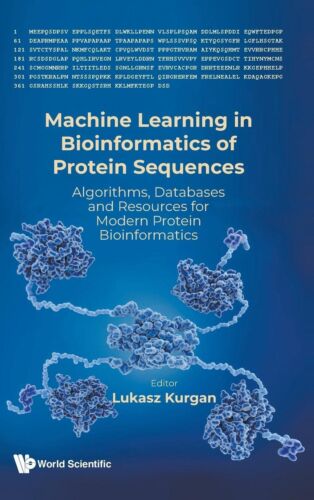
Machine Learning In Bioinformatics Of Protein Sequences: Algorithms, Database…

Machine Learning In Bioinformatics Of Protein Sequences: Algorithms, Database…
Price : 85.69
Ends on : N/A
View on eBay
Machine Learning In Bioinformatics Of Protein Sequences: Algorithms, Databases, and ApplicationsProteins play a crucial role in various biological processes, and understanding their structure and function is essential in many areas of research, including drug discovery, personalized medicine, and disease diagnosis. Bioinformatics, the field that combines biology and computer science, has been instrumental in analyzing and interpreting protein sequences to gain insights into their functions.
One of the key tools in bioinformatics is machine learning, which involves the use of algorithms to learn patterns from data and make predictions. Machine learning algorithms have been increasingly used in the analysis of protein sequences to predict protein structure, function, and interactions.
There are several machine learning algorithms that have been applied to the analysis of protein sequences, including support vector machines, neural networks, hidden Markov models, and random forests. These algorithms can be used to predict protein secondary and tertiary structure, identify protein domains, and classify proteins into functional families.
In addition to algorithms, databases play a crucial role in bioinformatics research on protein sequences. Databases such as UniProt, PDB, and Pfam provide comprehensive resources for protein sequences, structures, and annotations, which can be used for training machine learning models and validating predictions.
Machine learning in bioinformatics of protein sequences has a wide range of applications, including protein structure prediction, protein-protein interaction prediction, drug target identification, and disease gene discovery. By leveraging machine learning algorithms and databases, researchers can gain valuable insights into the complex world of protein sequences and pave the way for new discoveries in biology and medicine.
#Machine #Learning #Bioinformatics #Protein #Sequences #Algorithms #Database.., machine learning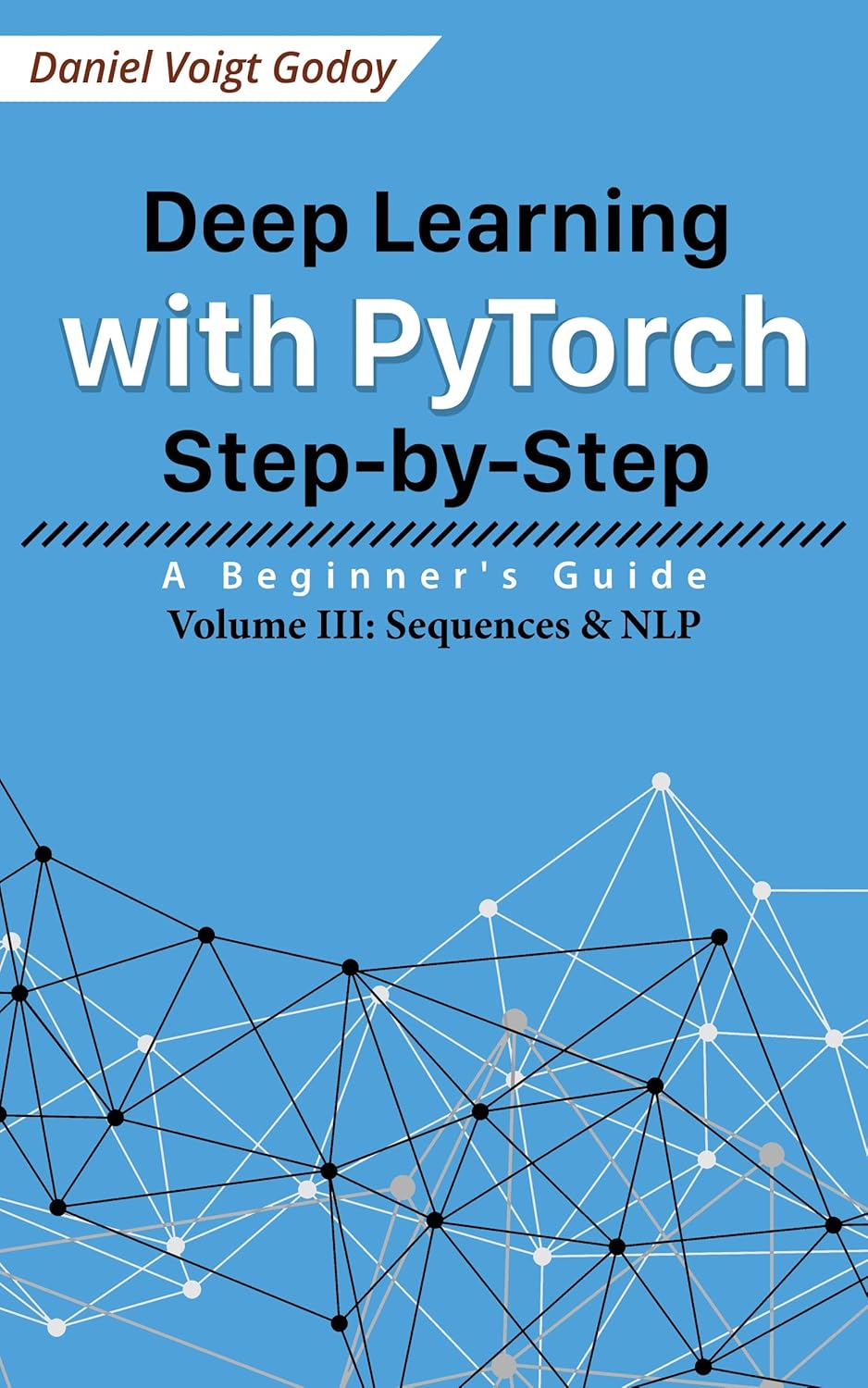
Deep Learning with PyTorch Step-by-Step: A Beginner’s Guide: Volume III: Sequences & NLP
Price: $9.99
(as of Dec 16,2024 05:51:48 UTC – Details)From the Publisher




Is this book for me?
Daniel wrote this book for beginners in general – not only PyTorch beginners. Every now and then he will spend some time explaining some fundamental concepts which are essential to have a proper understanding of what’s going on in the code.
This volume is more demanding than the other two, and you’re going to enjoy it more if you already have a solid understanding of deep learning models.
In this third volume of the series, you’ll be introduced to all things sequence-related: recurrent neural networks and their variations, sequence-to-sequence models, attention, self-attention, and Transformers.
This volume also includes a crash course on natural language processing (NLP), from the basics of word tokenization all the way up to fine-tuning large models (BERT and GPT-2) using the HuggingFace library.
By the time you finish this book, you’ll have a thorough understanding of the concepts and tools necessary to start developing, training, and fine-tuning language models using PyTorch.
What’s inside
Recurrent neural networks (RNN, GRU, and LSTM) and 1D convolutions
Seq2Seq models, attention, self-attention, masks, and positional encoding
Transformers, layer normalization, and the Vision Transformer (ViT)
BERT, GPT-2, word embeddings, and the HuggingFace library
… and more!

How is this book different?
This book is written as if YOU, the reader, were having a conversation with Daniel, the author: he will ask you questions (and give you answers shortly afterward) and also make some (silly) jokes.
Moreover, this book spells concepts out in plain English, avoiding fancy mathematical notation as much as possible.
It shows you the inner workings of sequence models, in a structured, incremental, and from-first-principles approach.
It builds, step-by-step, not only the models themselves but also your understanding as it shows you both the reasoning behind the code and how to avoid some common pitfalls and errors along the way.


“Hi, I’m Daniel!”
I am a data scientist, developer, teacher, and author of this series of books.
I will tell you, briefly, how this series of books came to be. In 2018, before teaching a class, I tried to find a blog post that would visually explain, in a clear and concise manner, the concepts behind binary cross-entropy so that I could show it to my students. Since I could not find any that fit my purpose, I decided to write one myself. It turned out to be my most popular blog post!
My readers have welcomed the simple, straightforward, and conversational way I explained the topic.
Then, in 2019, I used the same approach for writing another blog post: “Understanding PyTorch with an example: a step-by-step tutorial.” Once again, I was amazed by the reaction from the readers! It was their positive feedback that motivated me to write this series of books to help beginners start their journey into deep learning and PyTorch.
I hope you enjoy reading these books as much as I enjoyed writing them!
ASIN : B09R144VB5
Publisher : Self-Published (January 22, 2022)
Publication date : January 22, 2022
Language : English
File size : 29006 KB
Simultaneous device usage : Unlimited
Text-to-Speech : Enabled
Screen Reader : Supported
Enhanced typesetting : Enabled
X-Ray : Not Enabled
Word Wise : Not Enabled
Print length : 682 pages
Deep Learning with PyTorch Step-by-Step: A Beginner’s Guide: Volume III: Sequences & NLPIn this third volume of our beginner’s guide to deep learning with PyTorch, we will dive into the world of sequences and natural language processing (NLP). Sequences are a fundamental data structure in many applications, such as time series data, text data, and more. NLP, on the other hand, deals with the processing and understanding of human language using computational techniques.
In this guide, we will cover the following topics:
1. Introduction to Sequences: We will start by understanding what sequences are and why they are important in deep learning. We will explore different types of sequences, such as time series data and text data.
2. Sequence Models with PyTorch: We will learn how to build sequence models using PyTorch, including recurrent neural networks (RNNs), long short-term memory (LSTM) networks, and gated recurrent units (GRUs).
3. Natural Language Processing (NLP) Basics: We will introduce the basic concepts of NLP, such as tokenization, word embeddings, and text classification.
4. Building NLP Models with PyTorch: We will explore how to build NLP models using PyTorch, including text classification, sentiment analysis, and named entity recognition.
Throughout this guide, we will provide step-by-step instructions and code examples to help you understand and implement these concepts in PyTorch. By the end of this volume, you will have a solid understanding of how to work with sequences and NLP using PyTorch, and you will be ready to tackle more advanced deep learning tasks in these domains. Stay tuned for more updates and happy learning!
#Deep #Learning #PyTorch #StepbyStep #Beginners #Guide #Volume #III #Sequences #NLP
